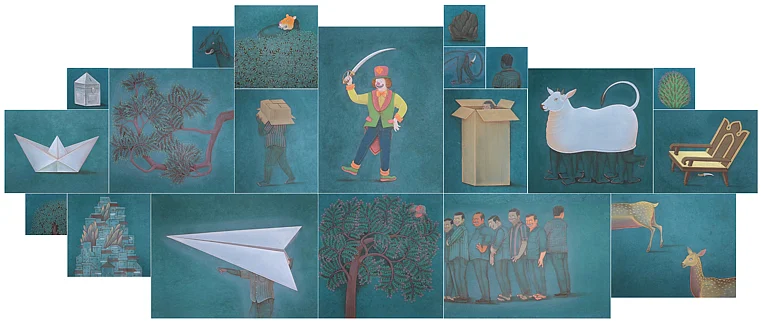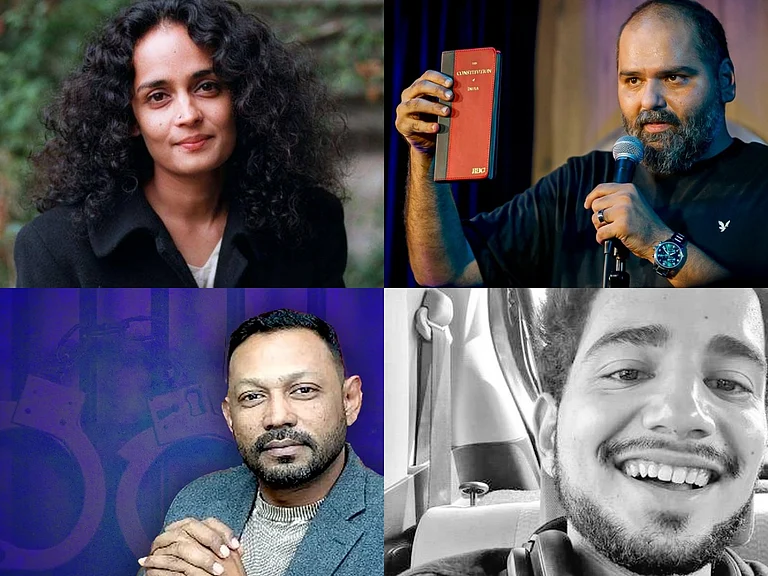To ask what future the humanities—variously called ‘arts’ and sometimes even ‘social sciences’ in India—have in our country is also to simultaneously account for its pasts and presents here. For the most part, those of us engaged in humanities education in formal settings like the university have been torn between a sense of despair, and on many occasions, a sense of vindication that nationally relevant issues may well have had their earliest iteration in a humanities classroom. So why the despair? India, until recently, has been committed to public-funded higher education which, despite tight budgets, has meant a very high quality of education, at least in some of its colleges and universities. While in many other parts of the world, the effects of privatisation and neoliberalism meant a dramatic fall in student enrolments in the humanities, no such reduction has happened as yet in the Indian university.
However, studying arts and humanities is something that has always been the second or third choice for large numbers of those who make it to higher education. This, of course, is an unintended consequence of India’s postcolonial development agendas, where science and technology were seen as integral to nation-building. Opting for the humanities thus was not merely undesirable, it was also seen as an option for those whose academic calibre wasn’t on par with those opting for science or technology studies. Needless to say, this is demoralising for students and teachers of humanities, always already relegated to the margins of academe, and worse still, the story of national advancement.
That said, most national discussions today on a wide range of issues—from Constitutionally-mandated rights, ethics, equality, various forms of justice, to culture, language or even the Anthropocene—have become part of the humanities curriculum, and are central to thought, debates and discussions there. In other words, the classroom in a university isn’t the kind of hermetically sealed ivory tower space that it is sometimes accused of being; on the contrary its porosity, especially in the Indian public university, permits ideas and formulations to have a much wider reach than is often recognised. This could be because of the ways in which those in the universities, be they teachers or students, have attempted to engage a wider public with their interventions, including in mainstream or social media, underscoring the difference of the Indian public university from its equivalent in many parts of the developed world.

Humanities education in India takes place not just in formal spaces like the university, but also in the family, temple precincts, or other public spaces.
So what should be the future of humanities in India? In an important intervention on this subject, philosopher Sundar Sarrukai (Location of the Humanities, Global Humanities: a Roundtable, Comparative Studies of South Asia, Africa and the Middle East, 2017) shows how humanities education in India takes place not just in formal spaces like the university, but also in non-formal ones like the family, temple precincts, or other public spaces. As a philosopher, what he brings to the discussion isn’t simply the importance of an Indian philosophical tradition, but also the ways in which teaching and learning were undertaken within non-formal settings. The question he poses for us is how we could think about the relationship between the formal and the non-formal, especially when looked at through the lens of knowledge transaction. I think that this is a very pertinent issue and one that we must take time and think about with patience.
In my experience as a teacher in a women’s/gender studies classroom, I have been repeatedly asked by students why we read so much “western theory” and whether it has any relevance to the Indian experience. This question has a life of its own and returns repeatedly to haunt such classrooms. It is precisely for that reason that I think we must take it seriously, even as we discuss the significance of Edward Said’s idea of ‘travelling theory’ which showed pertinently that for theory to survive it needed to have an applicability that exceeded its country of origin.
However, alongside with that, I also wish to ask a counter-factual. Why was it that I never heard this question in the history classroom, the other space that I have inhabited for many years? Is it perhaps that the bulk of what we study in India is ‘Indian history’, split over pretty indefensible (and increasingly jettisoned by more serious scholars) periodisation? Certainly, in ‘Modern Indian history’ classrooms, one may hear a very different lament—that the historiography of ‘modern India’ was oblivious to many regional histories and that at least until the 1980s, spoke very little about the histories of those on the margins. I believe that an attempt to speak to such a paradox, where the desire for and disappearance of the national as a site of thought and experience can co-exist, might give us some clues about what the humanities mean, and how we should think about its future.
While gender studies is a relatively new, interdisciplinary, formation that breaks through the classical distinctions between humanities and the social sciences, history has had many lives, and has been understood variously within different time periods in India as myth, narrative, dates, a characterisation of the past and so forth. That apart, notions of time itself are vast and varied, anywhere between cyclicality and linearity and that which may have no correspondence with geometrical forms. While I do think that students of different aspects and periods of history should be trained rigorously in languages, something that is relatively a low priority in India, historical research and writing has become far more capacious by bringing a wide variety of new areas, methods and questions for inquiry within its ambit. Often (though not always) this is a response to ongoing debates in the country. A good example of this is Romila Thapar’s essays on the idea of ‘dissent’ in India, which she rightly demonstrates is intrinsic to many indigenous ideas, practices and beliefs.

For me the question about the humanities isn’t just about a recovery of an ‘Indian’ mode of intellection, important and interesting though it is, but more about what I can learn about the humanities, and its relevance, from the changes that it has undergone in the past four decades or so. In other words, what does my own experience, within a university setting, first as a student and then a teacher, tell me about the life of the humanities in the university? In the case of both history and gender studies, I am struck by the manners in which ongoing struggles, debates and discussion could influence curricular changes in the university. Unlike gender studies that defines itself in relation to the women’s movements, which it sees as a site of knowledge production, history does not anchor itself in this manner. Yet, despite such a foundational, and indeed disciplinary difference, both have been moulded by a deep concern for engaging the criticalities produced by ongoing movements and the discussions that follow in their wake.
Be it questions of gender or social justice, differences in region or community, the significance of language, and linguistic battles, the widening economic disparities and questions related to labour, unemployment, migration, or environmental crisis, a good humanities curriculum reflects each of these issues. In that sense it lives up to what the humanities are meant to be—ways of studying the human, and their modes of living and being. Yet ‘the human’ is not conceptually static. The curricular changes over the past decades reflects the dynamism in thinking the human, sometimes dismantling it as a foundational category for thinking the humanities, and at other times trying to retain its use, even while attempting to complicate ways of conceptualising it.
Moreover the humanities provide an urgent critical viewpoint to think about not just the idea of ‘the human’ but also of what it means to be an Indian. The recent attempts in Delhi University to excise works in the literary studies syllabus has been met with shocked protest by hundreds around the country. Renowned writers like Mahashweta Devi, Bama and Sukirtharani whose pieces give voice to the most marginal in India—Dalit and Adivasi women—were amongst the ones considered unsuitable for an undergraduate audience. The excision and the protest it generated give a sense of why the humanities matter, and how the classroom is an integral part of the wider world of everyday life.
ALSO READ: Read Between The University Rankings
I began by expressing a sense of despair at the undervaluing of the arts and humanities in India. I wish to end on a more hopeful note. Anyone teaching in the public university in India knows that the composition of the student body has changed radically in the past two decades. Many more first-generation students, from socially and regionally deprived backgrounds, can now be seen in the academy, pursuing research on a wide variety of subjects. This changes not just the composition of the public university but also the very nature of knowledge production. They are no longer the ‘subjects of study’, but are producers and transmitters of new knowledge, perspectives and modes of analysis.
This, to me, is the future that those of us concerned about the humanities, and the public university, must help nurture and sustain. The presence of bahishkrit Bharat in the academy as knowledge producers, whose alienation from Indian society was constantly highlighted by Ambedkar, is the only way the classroom, university and India itself can change.
(This appeared in the print edition as "At Heart Of Arts Is ‘Second Best’")
(Views are personal)
ALSO READ
G. Arunima Director, Kerala Council for Historical Research





















